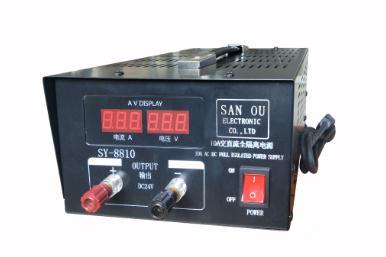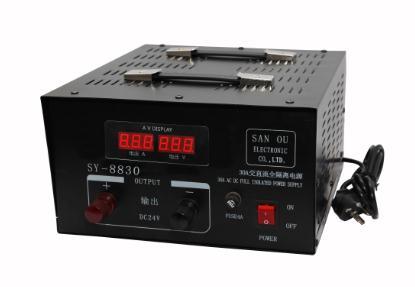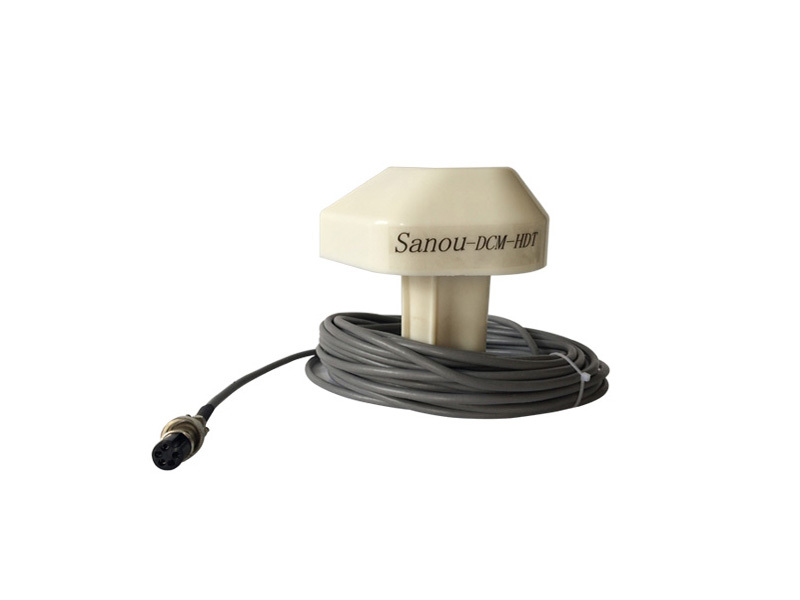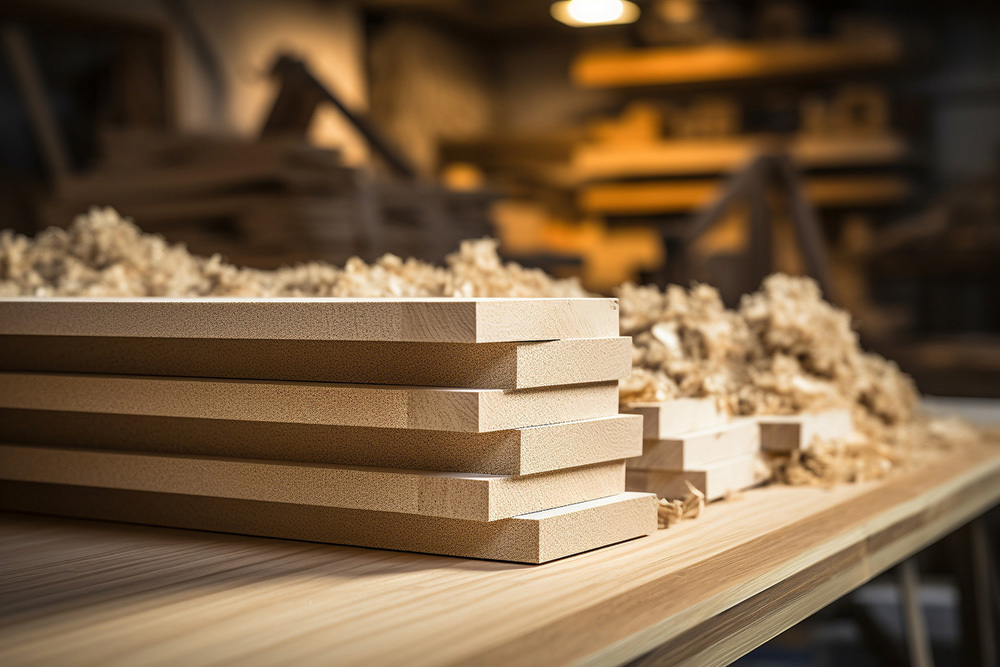News Center
Maximize Your Signal Distribution with an Efficient 1 in 10 Out Distributor
Maximize Your Signal Distribution with an Efficient 1 in 10 Out Distributor
Table of Contents
- Understanding Signal Distribution
- What is a 1 in 10 Out Distributor?
- Benefits of Using a 1 in 10 Out Distributor
- Applications of 1 in 10 Out Distributors
- Key Features to Consider
- Installing and Configuring Your Distributor
- Troubleshooting Common Issues
- Maintaining Your Signal Distributor
- FAQs
- Conclusion
Understanding Signal Distribution
Signal distribution is an essential function in various electronic systems, particularly in communication and data transmission. The process involves taking a single input signal and distributing it to multiple output points without degrading the quality of the signal. This is crucial for ensuring reliable communication in applications ranging from broadcasting to data centers and industrial automation.
In today's fast-paced technological landscape, effective signal distribution systems are vital. They help preserve signal integrity, minimize interference, and ensure that signals reach their intended destinations efficiently. Understanding the importance of this process sets the groundwork for exploring more advanced solutions like the **1 in 10 out distributor**.
What is a 1 in 10 Out Distributor?
A **1 in 10 out distributor** is a specialized electronic device designed to take one input signal and distribute it to ten different output channels. This device can handle various types of signals, including analog, digital, and RF signals. The primary purpose of the distributor is to maintain the quality and strength of the original signal while ensuring that it is effectively routed to multiple outputs.
This distributor's design typically includes high-quality components that help mitigate signal loss and interference. Advanced models may feature built-in signal amplification, isolation between outputs, and other innovative technologies that enhance performance. By utilizing a **1 in 10 out distributor**, users can efficiently manage and control signal flow in a multitude of environments.
Benefits of Using a 1 in 10 Out Distributor
Utilizing a **1 in 10 out distributor** offers numerous advantages that can significantly enhance signal management in various applications:
1. Improved Signal Integrity
By ensuring that the signal remains strong and clear across all outputs, these distributors help prevent degradation and interference, which are common issues in signal transmission.
2. Versatile Applications
The versatility of a 1 in 10 out distributor makes it suitable for a range of applications, from audiovisual setups in conference rooms to large-scale broadcasting systems.
3. Cost-Effective Solution
Instead of investing in multiple signal sources, a single distributor can efficiently manage multiple outputs, reducing overall costs for hardware and installation.
4. Simplified Signal Management
By centralizing signal distribution, these devices simplify the setup and monitoring of signal paths, making it easier for technicians and engineers to manage systems efficiently.
5. Enhanced System Reliability
High-quality distributors ensure that signals are transmitted reliably and consistently, improving the overall performance of the connected systems.
Applications of 1 in 10 Out Distributors
1 in 10 out distributors can be utilized in various fields, enhancing signal distribution in numerous contexts:
1. Broadcasting
In radio and television broadcasting, a **1 in 10 out distributor** helps disseminate signals to multiple transmission points, ensuring wide coverage and consistent quality.
2. Audio-Visual Systems
In conference rooms or auditoriums, these distributors can route audio and video signals to different devices, providing seamless integration for presentations and meetings.
3. Industrial Automation
In manufacturing environments, they can distribute sensor data to multiple control systems, enabling real-time monitoring and decision-making.
4. Telecommunications
Telecommunications infrastructure often relies on these distributors to manage incoming signals from different sources, ensuring efficient routing and minimal loss.
5. Data Centers
In data centers, efficient signal distribution is crucial for performance and reliability. A **1 in 10 out distributor** can manage communication between servers, storage, and networking equipment.
Key Features to Consider
When selecting a **1 in 10 out distributor**, several key features should be evaluated to ensure it meets your requirements:
1. Signal Type Compatibility
Ensure that the distributor can handle the type of signals you plan to use, whether they are analog, digital, or RF.
2. Signal Quality
Look for distributors with low signal loss, high isolation, and excellent frequency response to maintain signal integrity.
3. Build Quality
A robust build quality is essential for longevity, especially in industrial or high-traffic environments where equipment may be subject to wear and tear.
4. Ease of Installation
Consider how user-friendly the installation process is, including the availability of mounting options and accessibility to connectors.
5. Warranty and Support
A good warranty and reliable technical support can save you time and money in the long run, making it easier to resolve any potential issues.
Installing and Configuring Your Distributor
To maximize the benefits of a **1 in 10 out distributor**, proper installation and configuration are critical. Follow these steps for optimal results:
1. Gather Necessary Tools and Equipment
Ensure you have all the required tools and equipment for installation, such as screwdrivers, cables, and connectors.
2. Read the Manufacturer's Manual
Before beginning installation, review the manufacturer's instructions to understand the specific requirements and recommendations.
3. Choose the Right Location
Select an appropriate location for the distributor, ensuring it is easily accessible for maintenance and away from potential sources of interference.
4. Connect Input and Output Cables
Carefully connect the input signal to the distributor and route the output cables to their respective devices, paying close attention to polarity and signal type.
5. Test the System
Once everything is connected, power on the system and test each output to ensure the signal is being distributed properly and without loss.
Troubleshooting Common Issues
Even with proper installation, issues may arise. Here are some common problems and their solutions:
1. Poor Signal Quality
If signal quality is poor, check all connections for tightness and integrity. Additionally, ensure that the distributor is not placed near sources of electronic interference.
2. Signal Loss
Signal loss can occur if cables are too long or of inadequate quality. Consider using shorter, higher-quality cables or adding a signal amplifier if necessary.
3. Device Compatibility Issues
Ensure that all connected devices are compatible with the signal type being used. Consult device specifications to verify compatibility.
4. Overheating
If the distributor is overheating, ensure it has adequate ventilation and is not placed in a confined space.
Maintaining Your Signal Distributor
Regular maintenance can extend the life of your **1 in 10 out distributor** and enhance its performance. Follow these maintenance tips:
1. Regularly Inspect Connections
Periodically check all connections for signs of wear or corrosion, which can affect performance.
2. Keep the Area Clean
Dust and debris can interfere with signal quality and equipment function. Regularly clean the area surrounding the distributor.
3. Monitor Performance
Keep an eye on the performance of the distributor and connected devices. If you notice any irregularities, troubleshoot promptly.
4. Update Firmware
If your distributor has firmware, ensure that it is regularly updated to benefit from improvements and fixes provided by the manufacturer.
FAQs
1. What is the range of signals a 1 in 10 out distributor can handle?
A 1 in 10 out distributor can handle various signals, including analog, digital, and RF, although specific compatibility should be verified with the manufacturer.
2. Can I use a 1 in 10 out distributor for long-distance signal transmission?
Yes, but ensure to consider signal loss over long distances and use high-quality cables or signal boosters when necessary.
3. How do I know if my distributor is malfunctioning?
Watch for signs such as poor signal quality, intermittent outputs, or overheating, which can indicate a malfunction.
4. Is professional installation recommended for a 1 in 10 out distributor?
While many users can install these devices, professional installation is recommended for complex setups to ensure optimal performance.
5. What maintenance is required for a signal distributor?
Regularly inspect connections, keep the surrounding area clean, monitor performance, and update firmware if applicable.
Conclusion
Maximizing your signal distribution with an efficient **1 in 10 out distributor** is essential for maintaining high-quality communication across various applications. By understanding the benefits, applications, and key features of these distributors, as well as following proper installation and maintenance practices, you can ensure optimal performance and reliability. Whether in broadcasting, industrial automation, or data centers, a well-chosen and maintained signal distributor can significantly enhance your system's efficiency and effectiveness.
Related News
Understanding the Benefits of a 1 in 4 Out Signal Distributor for Electronic Components
Understanding the Benefits of a 1 in 4 Out Signal Distributor for Electronic Components Table of Contents 1. Introduction to Signal Distribution 2. What is a 1 in 4 Out Signal Distributor? 3. Key Advantages of Using a 1 in 4 Out Signal Distributor 3.1 Enhanced Signal Integrity 3.2 Improved Signal Distribution Efficiency 3.3 Flexibility in System Desi
Understanding the 1 in 10 Out Signal Distributor: A Key Component in Optoelectronic Applications
A 1 in 10 out signal distributor is a specialized electronic device that takes a single input signal and replicates it across multiple output channels—in this case, ten outputs. This function is crucial in various applications, including telecommunications, broadcasting, and data transmission systems. The ability to distribute a single signal to multiple outputs ensures that information can reach
Unlocking the Benefits of the Furuno 1831 Radar with a Quality 24 Pin Square Plug
Unlocking the Benefits of the Furuno 1831 Radar with a Quality 24 Pin Square Plug Table of Contents 1. Introduction to Furuno 1831 Radar 2. Key Features of the Furuno 1831 Radar 3. Advantages of Using a Quality 24 Pin Square Plug 4. Installing the Furuno 1831 Radar with a 24 Pin Square Plug 5. Maintenance Tips for Optimal Performance 6. Troubleshooting Common




